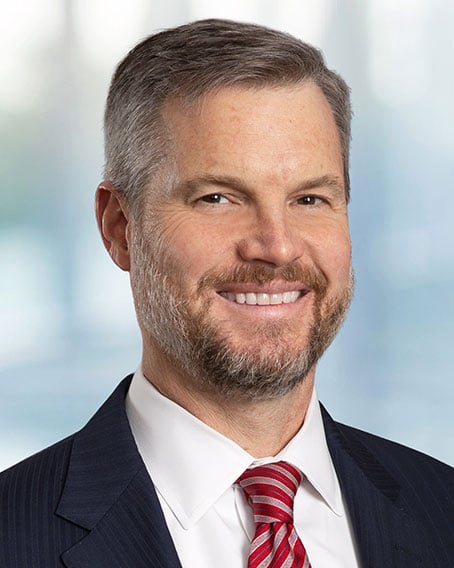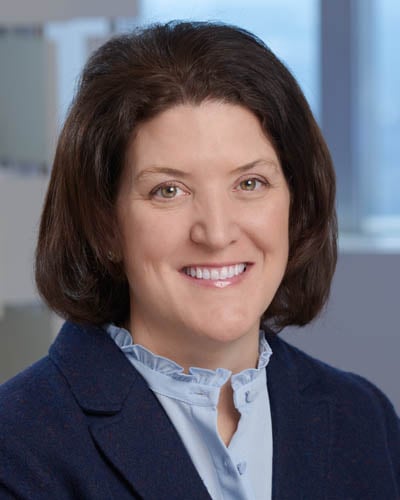In this Ropes & Gray podcast, asset management partner Mike Doherty and counsel Laura Hirst discuss the 2009 Term Asset-Backed Securities Loan Facility (TALF) program which the Fed established in response to the 2008-2009 financial crisis and, given current market conditions, what might be expected for the 2020 TALF program.
Transcript:
Mike Doherty: Hello, and thank you for joining us today for this Ropes & Gray podcast. My name is Mike Doherty and I’m a partner in Ropes & Gray’s asset management group. Here with me today is Laura Hirst, a counsel in the asset management group. In response to the current financial crisis caused by the recent COVID-19 pandemic, governments around the globe are implementing fiscal and monetary stimulus programs to address disruptions to the global economy. Today’s discussion will focus on one of the programs established by the Federal Reserve, the Term Asset-Backed Securities Loan Facility, or TALF, program. It is expected that the TALF program will be very similar to the TALF program that was established in 2009 in response to the 2008-2009 financial crisis. For that reason and because the terms of the current program haven’t yet been finalized, we will begin by discussing the 2009 TALF program before turning to what we know about the current program. Laura, as a refresher, could you please remind us of how the Fed used TALF during the 2008-2009 financial crisis?
Laura Hirst: Sure, Mike, I’d be happy to. As a response to the financial crisis in 2008 and 2009, the Federal Reserve developed TALF to provide for the issuance of loans to eligible borrowers, secured by eligible asset-backed securities, also known as “ABS,” and certain commercial mortgage-backed securities (or “CMBS”). TALF was administered by the New York Fed. The loans were non-recourse to the borrower and were subject to fees, interest rates, haircuts and other terms that were set by the Fed. The purpose of the program was twofold: one, to stimulate the issuance and trading of ABS and CMBS, markets hit particularly hard during that time, and two, to inject capital into the frozen credit markets. Basically, the program allowed participants to purchase high-quality asset-backed securities using very attractive non-recourse financing provided by the New York Fed at three- or five-year terms, depending on the collateral. In order to participate, eligible borrowers were required to maintain a relationship with a primary dealer, which was responsible for interfacing with the New York Fed on the borrower’s behalf and settling the trades. The collateral that was pledged to secure the loans had to be held by the program’s collateral custodian, The Bank of New York Mellon, and the borrowers had to be either a company or investment fund organized in the U.S., a U.S.-insured depository institution or a U.S. branch of a foreign bank. Ninety-five percent of the underlying collateral also had to be exposures to U.S. domiciled obligors originated by U.S. institutions or U.S. branches of foreign banks. The Fed originally set a $200 billion cap, but later upsized the facility to $1 trillion. The program was widely considered a success and was phased out during the recovery. The last loans made under the original TALF program were made in June 2010.
Mike Doherty: That’s great, thanks, Laura. Although the 2009 TALF program appeared at first glance to be geared toward businesses, other market participants, such as private investment funds and registered investment companies, were also able to participate. As a matter of fact, a number of fund sponsors organized private funds specifically to make TALF investments, or participated in those investments through existing funds. Although at the outset, there was some uncertainty around whether registered investment companies such as mutual funds could participate, in 2009, the SEC staff issued a no-action letter addressing certain issues under the Investment Company Act, which we’ll discuss later in this podcast.
Laura Hirst: Now let’s turn to what the Fed has announced more recently. Back in March, the Fed began to roll-out the preliminary details of steps that they were taking to help address the current financial crisis. Under Section 13(3) of the Federal Reserve Act, the Fed can take certain unilateral actions without Congressional consent or action; the actions merely need to be reported to Congress. TALF is one of the programs the Fed has established. From what we understand based on guidance the Fed has put out, TALF 2.0 has been modeled to very closely mirror the original program, and will again be administered by the New York Fed. As some of our listeners may recall from 2009, the Fed took several months to begin issuing loans following the announcement of TALF. With the benefit of utilizing the original program as a roadmap, we are hopeful that the current program will be operational in a shorter period of time. Much of the preliminary conversation has been focused on eligible collateral for TALF 2.0. While there are restrictions on the ABS collateral the Fed is willing to accept as security, the list in the term sheet that has been issued is fairly expansive. It includes ABS collateralized by: auto loans and leases, student loans, credit card receivables, equipment loans and leases, floorplan loans, insurance premium finance loans, certain SBA loans, leveraged loans and certain commercial mortgages. There also has been a big push by the structured-finance industry and some politicians to include private label residential mortgage-backed securities and unsecured personal loans in TALF. We’ll wait to see how the Fed chooses to respond to these requests. There is certainly more to come from the Fed in terms of collateral eligibility requirements and other terms and conditions, but the general guidance from the Fed is that TALF 2.0 will be very similar to the initial program. However, one notable difference with TALF 2.0 is the lack of restrictions relating to the Employ American Workers Act, or EAWA. Mike, would you care to elaborate on that?
Mike Doherty: Of course. The original iteration of TALF was introduced in 2009, and as some may remember, the stimulus package that passed at that time was subject to some heavy political debate. One by-product of those negotiations was the Employ American Workers Act, or EAWA, which had effects on companies that received TARP funds or other assistance from any Federal Reserve program, including TALF. The requirement to comply with EAWA also applied to investors of twenty-five percent or more in the TALF borrower. When hiring new employees, the affected companies were required to certify that they had taken good faith efforts to recruit U.S. workers before offering positions to individuals on H-1B visas, which are specialty occupation worker visas for foreign individuals. EAWA automatically expired in 2011 and was not renewed, and based on documentation that has been released so far, there is no information to suggest Congress plans to bring it back. Another point we would like to note is that the definition of “eligible borrower” in the 2009 terms and conditions specifically included a reference to investment funds. However, the current definition of “eligible borrower” in the terms issued to date for TALF 2.0 refers to U.S. companies and does not specifically reference investment funds. Although it appears that U.S. domiciled investment funds could meet the definition of U.S. companies, we are hoping that the Fed will provide further clarification on the definition of “eligible borrower” as it relates to investment funds.
Laura Hirst: So to summarize, while the new TALF does have some distinguishing characteristics, it is setup to operate similarly to its prior iteration. We’ll closely monitor the program as more information is available, and we’ll watch for changes to the clarifications on the information issued to date, including the eligibility of RMBS and consumer loan-backed ABS in the program. Before we go Mike, would you please spend some time discussing the issues specific to participation by registered funds?
Mike Doherty: Of course. Very generally, the main concerns relate to limits on borrowing applicable to registered funds, and requirements as to how registered funds custody their assets. Although the Investment Company Act does not forbid registered funds from borrowing, it does impose some significant restrictions on their ability to do so. The nature of the restrictions vary somewhat depending on whether a fund is open-end or closed-end. The 2009 no-action relief allowed registered funds to participate in the program, in large part based on the non-recourse nature of the loans and compliance with “asset segregation” requirements generally applicable to reverse repurchase agreements. Also, registered funds are subject to custody requirements, which are designed to safeguard their assets. There was a concern that the involvement of primary dealers and the TALF custodian would not meet these requirements, but the SEC staff gave relief on these points also. To the extent that the primary terms of the program remain similar to the 2009 program, we are hopeful that the Staff would extend the no-action relief issued on these points in 2009 to TALF 2.0. In addition, in 2009, the SEC staff issued a second no-action letter which allowed multiple funds advised by the same manager to aggregate investments in a private fund for purposes of participating. However, by its terms, this no-action relief could not be relied upon by other market participants – fund sponsors seeking similar relief would have needed to seek their own no-action letter. In addition to considering senior security and custody issues, registered funds which wish to participate in TALF will also need to consider issues such as liquidity and pricing.
Laura Hirst: Mike, thank you very much for taking the time today to join me for this discussion. For more information about TALF or other topics of interest to the asset management and credit funds communities, please visit our website at www.ropesgray.com. And, of course, if we can help you navigate any of the topics we discussed today, please don't hesitate to get in touch with Mike, me or another member of the Ropes & Gray asset management team. Stay tuned for future podcasts on the latest developments in this space. You also can subscribe and listen to this series wherever you regularly listen to podcasts, including on Apple and Spotify. Thanks again for listening.
Speakers
Stay Up To Date with Ropes & Gray
Ropes & Gray attorneys provide timely analysis on legal developments, court decisions and changes in legislation and regulations.
Stay in the loop with all things Ropes & Gray, and find out more about our people, culture, initiatives and everything that’s happening.
We regularly notify our clients and contacts of significant legal developments, news, webinars and teleconferences that affect their industries.




